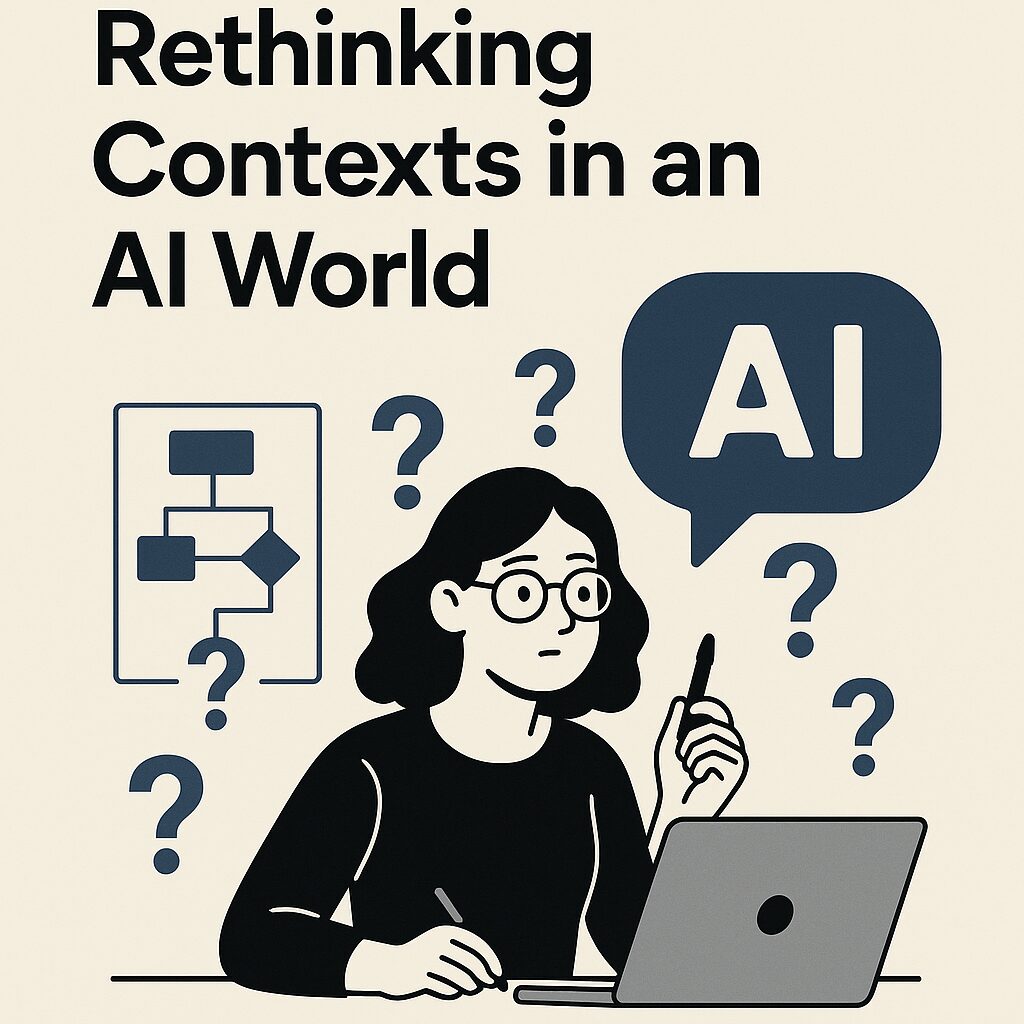
As technical communicators and UX researchers, we know that asking the right questions is the foundation of meaningful design. Contextual inquiry, or observing users in their environments and probing into their workflows, has long been a cornerstone method. But as AI-driven tools become integrated into daily life, we have new opportunities, and challenges, in how we conduct research.
Contextual inquiry with AI isn’t about replacing traditional methods. It’s about enhancing them. AI can help analyze patterns faster, surface unexpected insights, and even automate parts of user observation. Yet it also introduces complexity: users interact with AI tools differently than with static systems, often unpredictably.
To stay effective, technical communicators must refine their research questions, adapt to dynamic contexts, and remain critical about what data truly represents user needs.
Rethinking Contexts in an AI World
Traditional contextual inquiry assumes relatively stable workflows. You observe a user interacting with a system, map their actions, and probe their decisions.
But AI systems are different. They adapt, predict, and sometimes mislead users by surfacing recommendations or unexpected outputs. Understanding user trust, error recovery, and expectations in AI interactions demands new types of observations and better follow-up questions.
Researchers now need to ask:
- How does the AI influence user behavior over time?
- Where do users misunderstand or mistrust AI outputs?
- How do users collaborate (or clash) with AI suggestions?
Documenting these dynamics is critical to designing transparent, ethical, and usable AI experiences.
Using AI to Enhance Contextual Inquiry
Ironically, AI can also be a valuable research tool. When thoughtfully applied, AI can:
- Analyze field notes for recurring patterns
- Cluster user behaviors more quickly
- Visualize interaction flows through automated mapping
By letting AI handle rote analysis, researchers can spend more time on interpretation and strategy—the areas where human judgment remains essential.
However, automation must be balanced with skepticism. Not all AI-generated insights are meaningful. Technical communicators must critically validate findings, especially when AI tools suggest patterns that could bias design decisions.
Staying Human-Centered
Ultimately, contextual inquiry with AI is still about understanding human needs. It’s about staying grounded in user experience, even as the technologies we study become more dynamic and less predictable.
Technical communicators who can navigate this complexity, who can blend traditional inquiry methods with AI-driven insights, will be better positioned to design ethical, accessible, and genuinely helpful systems.
The questions we ask today will define the user experiences of tomorrow. Let’s make sure we’re asking the right ones.
